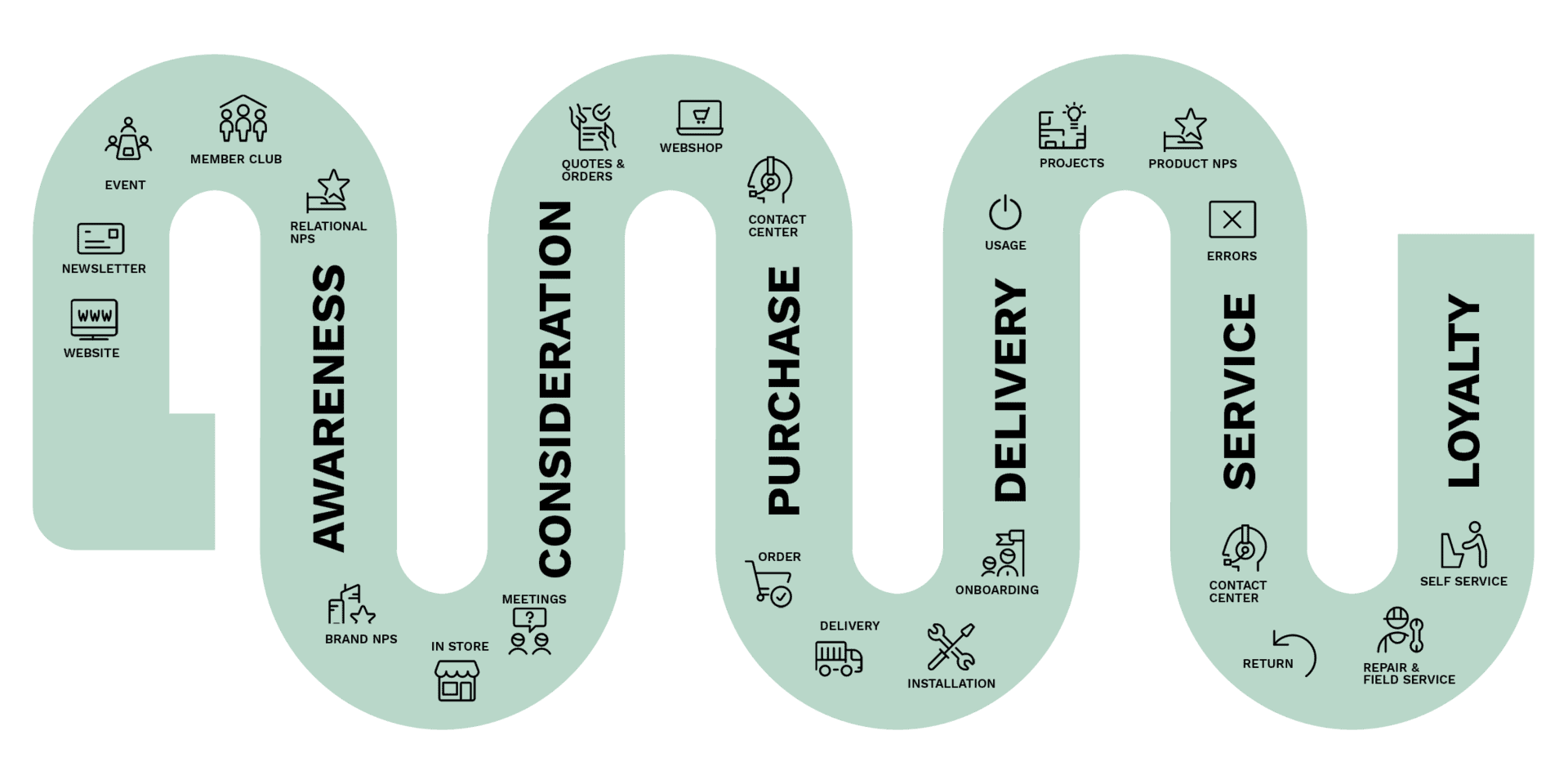Satisfied customers...
are happy and got what they expected from your products or services.
Loyal customers...
experience that they have received more, are therefore less price sensitive and generally buy more. They are your ambassadors in the market and attract new customers.
Dissatisfied customers...
spend more time on customer service, cost more to maintain and happily tell others about their bad experiences. They happily change brand or company and are at the same time the most expensive to get to buy.
With an NPS-based loyalty program, you simply and effectively gain important knowledge about what your customers are experiencing and how you should act on it.
The NPS method - How does it work?
The reason why the NPS has become an international standard is, that it is partly a very simple measurement method and partly that a linear relationship between NPS and growth has been documented.
NPS is also called “The ultimate question” because you only ask your customers one question and index them based on their answers:
Promoters (scores 9-10)
The loyal enthusiasts that will keep purchasing and who often recommend your organization or product to others. These customers help strengthen the company’s brand through positive word-of-mouth and often drive profitable sustainable growth.
Passives (scores 7-8)
They are satisfied but without specific preferences for your organization and “Passives” will therefore be susceptible to your competitors’ offers.
Detractors (scores 0-6)
They are unsatisfied customers that could potentially damage the organization’s brand and prevent growth in the organization through negative mentions.
How does one calculate NPS?
To calculate the NPS of an organization or a product, one would detract the percentage of detractors from the percentage of promoters. This will result in a score of the total customer experience between -100 and 100.
When the receiver has answered the question, they are given the opportunity to elaborate on their response. Essential to this, the response rate and relevance for the comment, is that the follow-up question is related to the actual rating.
- What could we have done better?
- What does it take to reach a 10?
- What is the reason for your positive rating?
By giving the respondents the opportunity to elaborate on their answers you are not affecting the response but will receive the tool to understand the reasons for the respondent’s answer. This means that you do not have to ask more questions, as the respondents will tell you what is most important to them.
This is the core of the NPS-method. Only asking questions on the premises of the receiver instead of a series of questions that the sender thinks is important. We give the respondent the opportunity to share exactly what is important for them.
Customer Experience Management with the NPS method
NPS can do more than just measure customer loyalty. It is also an effective method of measuring and acting based on customer experiences.
By reformulating the question, a bit, you can adapt it to all your company’s touchpoints. This allows you to use the same method across the entire organization, from customer service, sales, delivery or in your marketing.

Here you get the respondent’s primary input for the specific experience. Instead of asking your customer a variety of questions about their experiences once a year that they may not find essential, ask your questions in the current situation. Thus, the question has greater relevance to the recipient, and you get the answer while you still have an opportunity to act on it.
With nps.today you can combine satisfactory and loyalty measurements in one total solution based on the NPS-method. Furthermore, you can ask the NPS-question, and the specific questions that you need to ask, in every transaction, touchpoint, and channel throughout the customer experience.
Do you want to know more about how you can convert your annual customer investigations to operational NPS? Book a free session right here:
NPS - FAQ
What is NPS?
NPS is a way of measuring a customer’s loyalty toward a company. NPS is short for Net Promoter Score. The customer ranks the company on a scale from 0-10. The higher the score the greater loyalty.
How does one calculate NPS?
To calculate the NPS of an organization or a product, one would detract the percentage of detractors from the percentage of promoters. This will result in a score of the total customer experience between -100 and 100.
What is perceived as a good NPS?
NPS is not easy to compare across industries. As a starting point, a score above 0 is fine as it means that you have more loyal than disloyal customers.
The most common rules-of-thumb is in addition
A score above 20 is good
NPS above 50 is excellent
If the NPS is above 80 the score is seen as extraordinary

Find inspiration to your work with NPS and CX
You can always find customer cases and articles about Net Promoter Score and Customer Experience on our blog
